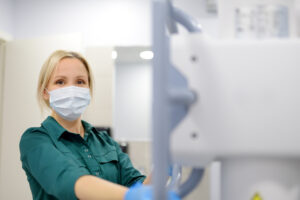Diagnostic imaging plays a critical role in modern healthcare, providing clinicians with vital information to help diagnose and treat patients. However, ensuring that diagnostic imaging practices maintain the highest standards of quality and safety can be a complex and challenging task. Fortunately, technology has a key role to play in achieving and maintaining diagnostic imaging accreditation for practices in Australia. In this article, we will explore the various ways in which technology can help improve the quality and safety of diagnostic imaging, ultimately helping practices achieve and maintain accreditation.
1. Digital image management
Digital image management systems can help practices store and manage diagnostic images more efficiently and effectively. By eliminating the need for physical film and paper-based records, digital image management systems can help reduce the risk of errors and improve the accuracy of diagnoses. Digital systems also allow for easier sharing of images between clinicians, facilitating collaborative diagnosis and treatment planning.
2. Automated quality assurance
Automated quality assurance (QA) systems can help practices monitor and evaluate the quality of diagnostic images more effectively. These systems use sophisticated algorithms and machine learning techniques to automatically identify and flag potential issues with images, such as incorrect positioning or exposure. This can help reduce the risk of errors and improve the accuracy of diagnoses.
3. Artificial Intelligence (AI)
Artificial intelligence (AI) has the potential to transform the field of diagnostic imaging. AI algorithms can analyse vast amounts of medical data and diagnostic images to help identify patterns and trends that may not be visible to human clinicians. This can help improve the accuracy and speed of diagnoses, as well as facilitate personalised treatment planning.
4. Remote diagnosis and reporting
These systems can help practices provide diagnostic imaging services to patients in remote or underserved areas. They allow for diagnostic images to be transmitted securely and quickly to expert clinicians located elsewhere, who can provide diagnoses and treatment recommendations. This can help improve access to high-quality diagnostic imaging services for patients who may not otherwise have access.
Let the team at Excelsior Accreditation create or review policies for your diagnostic imaging service today.
5. Cloud-based systems
Cloud solutions can help practices store and manage diagnostic images more securely and efficiently. They allow for easy and secure access to diagnostic images from anywhere, at any time, which can help facilitate collaborative diagnosis and treatment planning. In addition, they are critical for reducing the risk of data loss or breaches, as data is stored securely on remote servers. This is especially important as the healthcare industry becomes an increasingly high target for cyber-attacks like ransomware and malware.
Let the team at Excelsior Accreditation create or review policies for your diagnostic imaging service today.
6. Mobile technology
This helps clinicians access and review diagnostic images on the go, improving the speed and efficiency of diagnosis and treatment planning. Mobile apps can provide secure access to diagnostic images and patient records, allowing clinicians to review and diagnose patients even when they are not in the office.
Let the team at Excelsior Accreditation create or review policies for your diagnostic imaging service today.
7. Electronic Health Records (EHRs)
This supports practices to manage patient records more effectively and efficiently. EHRs can provide clinicians with easy access to diagnostic images, as well as other relevant patient information, such as medical history and lab results. This can help improve the accuracy and speed of diagnoses, as well as facilitate personalised treatment planning.
Let the team at Excelsior Accreditation create or review policies for your diagnostic imaging service today.
8. Online learning and training
Accessible and customisable, online learning is key to supplying the necessary training and education to maintain high standards of quality and safety. These platforms can provide clinicians with easy access to training materials and courses, allowing them to stay up to date with the latest diagnostic imaging techniques and best practices.
By embracing technology and staying up to date with the latest advancements, diagnostic imaging practices can provide patients with high-quality, safe, and effective care.
Make DIAS accreditation and maintenance simple and affordable
With over 20 years of industry experience, Excelsior Accreditation is a professional DIAS accreditation provider with unique insight into diagnostic imaging, practice needs, and accreditation standards. IAS certification. Whether you are starting a new practice, want to achieve full accreditation for your existing practice, or would like your DIAS certification to be professionally maintained, we’re here to provide the expert guidance and tailored services you require. We can evaluate your DIAS accreditation readiness in line with the latest accreditation standards, as well as supplying policies for quality and WH&S in imaging, medication standards, and performing your LSPN paperwork. Let us make DIAS accreditation easy and hassle-free for you today.
By embracing technology and staying up to date with the latest advancements, diagnostic imaging practices can provide patients with high-quality, safe, and effective care.






